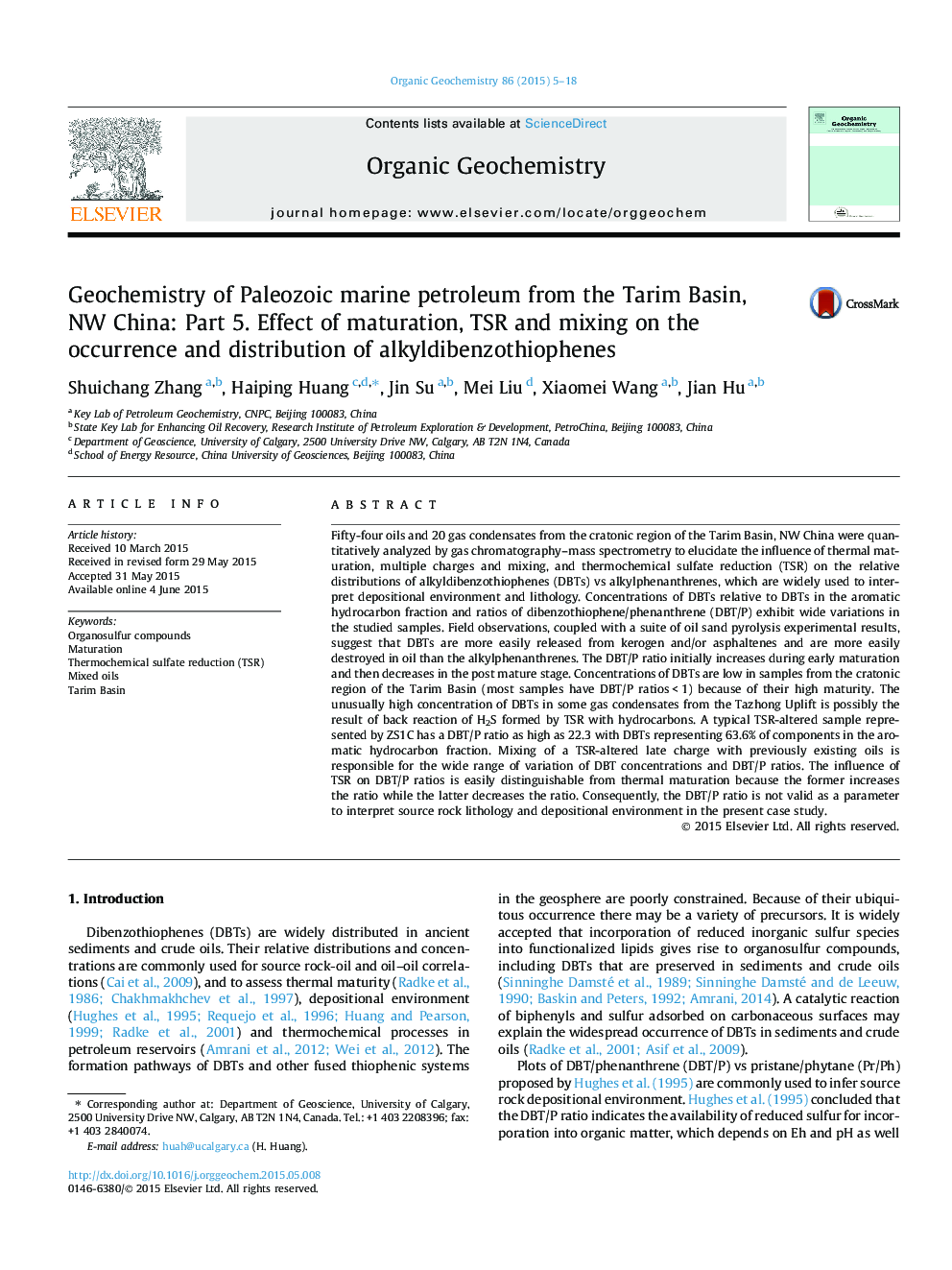| Article ID | Journal | Published Year | Pages | File Type |
|---|---|---|---|---|
| 5162220 | Organic Geochemistry | 2015 | 14 Pages |
Abstract
Fifty-four oils and 20 gas condensates from the cratonic region of the Tarim Basin, NW China were quantitatively analyzed by gas chromatography-mass spectrometry to elucidate the influence of thermal maturation, multiple charges and mixing, and thermochemical sulfate reduction (TSR) on the relative distributions of alkyldibenzothiophenes (DBTs) vs alkylphenanthrenes, which are widely used to interpret depositional environment and lithology. Concentrations of DBTs relative to DBTs in the aromatic hydrocarbon fraction and ratios of dibenzothiophene/phenanthrene (DBT/P) exhibit wide variations in the studied samples. Field observations, coupled with a suite of oil sand pyrolysis experimental results, suggest that DBTs are more easily released from kerogen and/or asphaltenes and are more easily destroyed in oil than the alkylphenanthrenes. The DBT/P ratio initially increases during early maturation and then decreases in the post mature stage. Concentrations of DBTs are low in samples from the cratonic region of the Tarim Basin (most samples have DBT/P ratios < 1) because of their high maturity. The unusually high concentration of DBTs in some gas condensates from the Tazhong Uplift is possibly the result of back reaction of H2S formed by TSR with hydrocarbons. A typical TSR-altered sample represented by ZS1C has a DBT/P ratio as high as 22.3 with DBTs representing 63.6% of components in the aromatic hydrocarbon fraction. Mixing of a TSR-altered late charge with previously existing oils is responsible for the wide range of variation of DBT concentrations and DBT/P ratios. The influence of TSR on DBT/P ratios is easily distinguishable from thermal maturation because the former increases the ratio while the latter decreases the ratio. Consequently, the DBT/P ratio is not valid as a parameter to interpret source rock lithology and depositional environment in the present case study.
Keywords
Related Topics
Physical Sciences and Engineering
Chemistry
Organic Chemistry
Authors
Shuichang Zhang, Haiping Huang, Jin Su, Mei Liu, Xiaomei Wang, Jian Hu,
